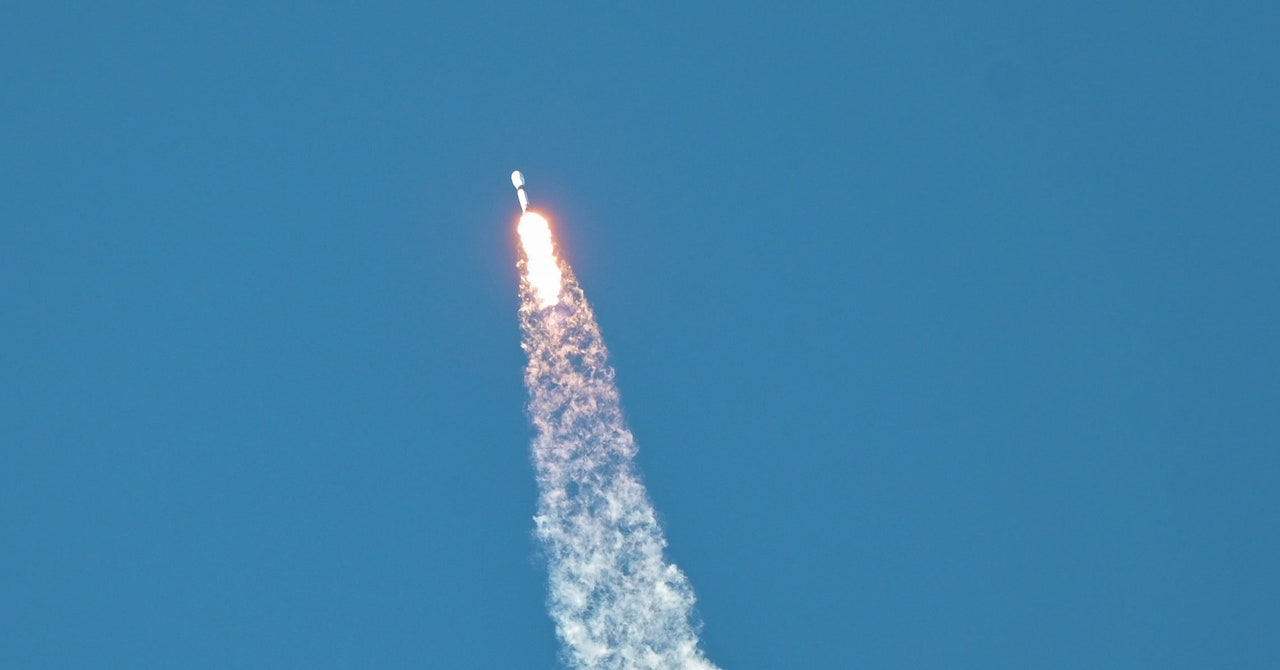While this is entirely a military operation, the Space Force is buying the satellite technology from private companies under contract. One swarm of the new satellites, provided by SpaceX and Florida-based L3Harris, will be charged with missile tracking using their wide field-of-view sensors. Another group, provided by Lockheed Martin and Colorado-based York Space Systems, will be relaying data between ground systems and the spacecraft. The agency will add other networks to the mix in about two years, including satellites from Northrop Grumman, according to Jennifer Elzea, an SDA spokesperson.
The approach of using many small satellites together, rather than a handful of large ones, initially faced some resistance within the military—it’s a big change from the way the Pentagon has operated for decades. “It’s a bit of a culture shock,” Bingen says. But when Russia invaded Ukraine in 2022, Ukraine and its NATO backers began making use of thousands of small, networked satellites, including SpaceX’s Starlink for broadband, Maxar’s and other companies’ for optical and radar imagery, and GPS. While Russia has invested in anti-satellite missiles, lasers, and electronic weapons, none of these are suited for taking down a swarm. That demonstrated the utility of this kind of constellation, says Brian Weeden, director of program planning at the Secure World Foundation, a nonpartisan think tank based in Broomfield, Colorado. “Why isn’t Russia blowing up Starlink satellites?” he asks. “They have the capability, but it’s just not going to matter.”
Still, flying in relatively congested low Earth orbit could make the swarm vulnerable to collisions with other satellites and bits of space junk, like derelict spacecraft and shrapnel flung from previous anti-satellite missile tests. However, they won’t overlap with the orbits of major commercial constellations; they’ll operate above Starlink satellites and below OneWeb’s network.
If the 2024 budget the Space Force has proposed to Congress becomes a reality, it will pump some $4 billion into these satellite systems next year, about double the amount of previous years. After that, the agency is requesting about $5 billion annually through 2028, Bingen says. Congressional approval of this growing budget would be a sign of broad US government support for this new military strategy. (For comparison, this four-year budget for new satellites would add up to two James Webb Space Telescopes.)
The Space Force’s satellite constellations are launching just as the US’s rivalries with China and Russia are escalating. All three countries have been expanding their military capabilities in space, including investing in satellites and technologies that could be used to attack them. There is very little diplomacy or communication between the militaries of the US and China, other than warnings of close encounters between objects in orbit, Weeden says. Even the two countries’ civilian space programs are restricted from cooperating with each other, thanks to a policy called the Wolf Amendment.
One of the motivations for building this satellite network is the development of faster-moving hypersonic missiles, which China and the US have both tested over the past couple of years. Hypersonic missiles travel at five times the speed of sound or faster, and they fly at much lower altitudes than intercontinental ballistic missiles, or ICBMs. ICBMs rely on booster rockets to blast them through the Earth’s atmosphere. Then the warheads have free flight through the edge of space and only reenter the atmosphere near their target. On the other hand, hypersonic glide vehicles produce aerodynamic heating during flight that makes them visible to infrared detectors, and the engines of hypersonic cruise missiles are detectable as well, says David Burbach, a national security affairs expert at the US Naval War College in Newport, Rhode Island. The new satellite swarms will be equipped with infrared detectors, while the military continues to make use of ground- and sea-based radar sensors to detect ballistic missiles.
By some counts, the Pentagon’s current missile defense systems have only achieved a 50 percent success rate in tests. It’s possible that the new satellite swarm could improve these systems by providing faster, more accurate data. But, Burbach argues, it’s the Space Force’s shift toward constellations of smaller, cheaper satellites that’s most notable: “I see this more as a culture change than a capability change.”
Updated 8/18/2023 2:30 pm ET: This story was updated to correct statements about the detectability of hypersonic weapons.

































